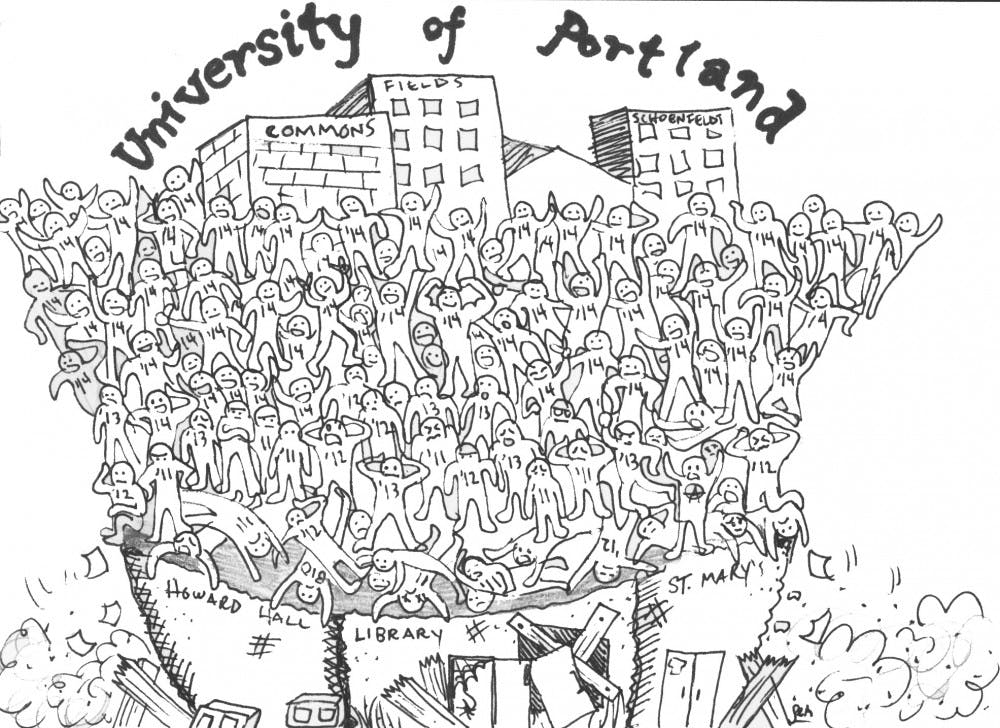Feeling the Squeeze
(Samantha Heathcote -- The Beacon)
By The Beacon Editorial Board
Small schools have their advantages. Your professors know your name. More individual attention. It's easier for you to get into the classes you need or want to take and odds are you'll run into several people you know while walking to class.
The University of Portland struts its small school advantages to prospective students, and for good reason. But over time, this school has been growing.
You can see the signs in the Biology Department where every introductory course class has a waiting list and lecturers are taking on the responsibilities of overloaded advisers. A number of the new freshmen men can see it in their forced triple living arrangements.
We understand that the Department of Admissions does not have a magic crystal ball revealing how many accepted students will choose to come to UP. But the size of the freshman class has been rising steadily for the last five years. This year the freshman class increased dramatically from last year's 816 to 897. That number is expected to drop slightly within the first month, but it is still a considerable increase.
Administrators seem dedicated to the small, communal atmosphere of the university, stating no intent to increase the school's size. The numbers, however, tell a different story.
The University leadership should be mindful about what those increases mean to students who came here expecting small school benefits. They did not sign up for forced triples and overfilled classes.
The campus has experienced significant changes lately. Improvements such as the renovation of The Commons and the new dorms, Schoenfeldt and Fields, have significantly contributed to accommodating more students on campus. But is this enough?
The new buildings are snazzy but what about the many buildings on campus that have been neglected?
These are the ones they don't put on the advertising pamphlets: Howard Hall, Buckley Center and St. Mary's, to name a few. Recreational fields for intramural sports disappeared to make way for new dorms and have not been replaced.
It's better to walk before we run. Buying the "River Campus" property, building new dorms, and admitting increasing numbers of freshmen does make the school look sleek. But what's that worth when buildings students already use are neglected and new students are squeezed into triples?
The University is coping with the ramifications of the inflated freshman class. But we don't want our University to cope — we want it to thrive! Until the University has the tools to deal with increased quantity, it needs to stick to small school quality by putting a cap on the number of freshmen admitted next year.








